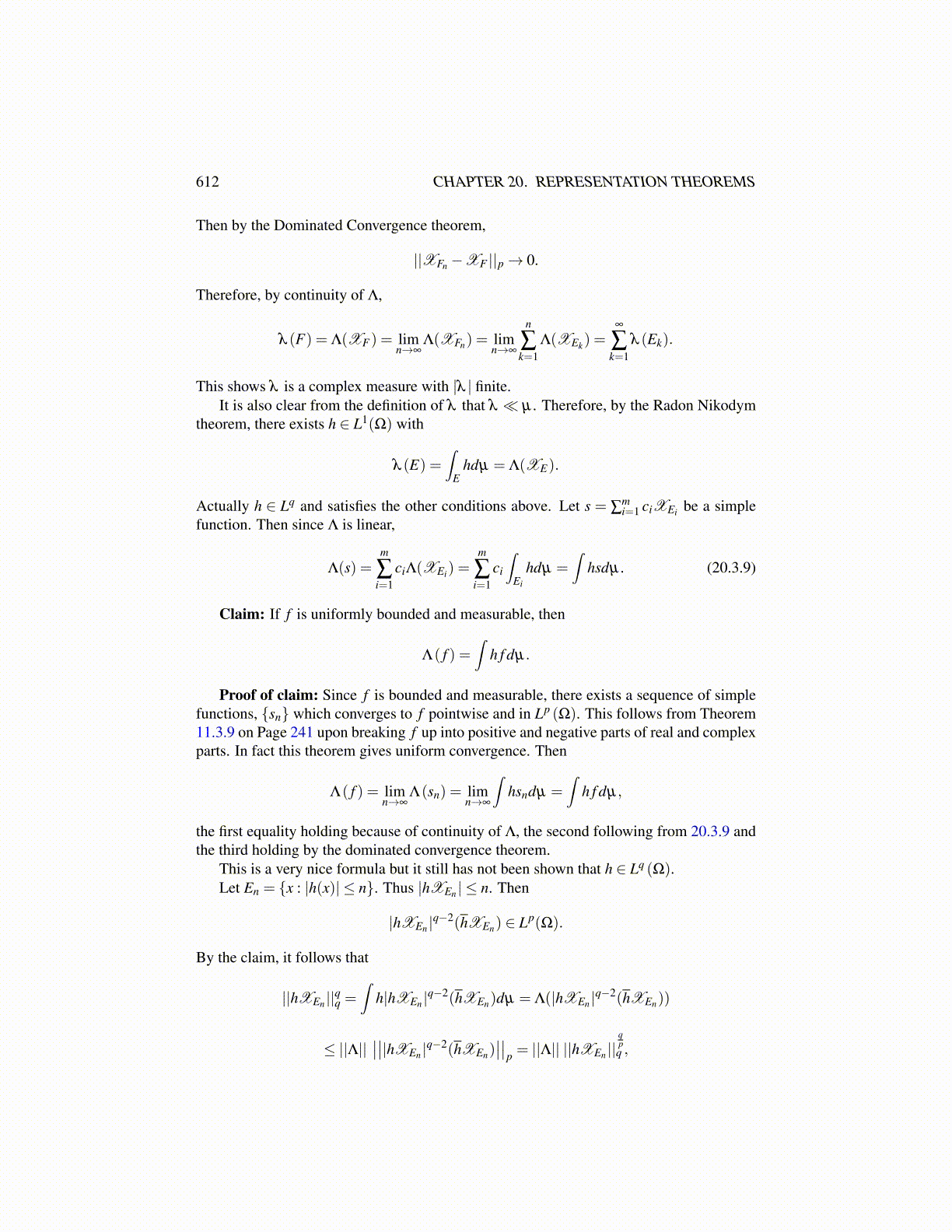
612 CHAPTER 20. REPRESENTATION THEOREMS
Then by the Dominated Convergence theorem,
||XFn −XF ||p→ 0.
Therefore, by continuity of Λ,
λ (F) = Λ(XF) = limn→∞
Λ(XFn) = limn→∞
n
∑k=1
Λ(XEk) =∞
∑k=1
λ (Ek).
This shows λ is a complex measure with |λ | finite.It is also clear from the definition of λ that λ ≪ µ . Therefore, by the Radon Nikodym
theorem, there exists h ∈ L1(Ω) with
λ (E) =∫
Ehdµ = Λ(XE).
Actually h ∈ Lq and satisfies the other conditions above. Let s = ∑mi=1 ciXEi be a simple
function. Then since Λ is linear,
Λ(s) =m
∑i=1
ciΛ(XEi) =m
∑i=1
ci
∫Ei
hdµ =∫
hsdµ . (20.3.9)
Claim: If f is uniformly bounded and measurable, then
Λ( f ) =∫
h f dµ.
Proof of claim: Since f is bounded and measurable, there exists a sequence of simplefunctions, {sn} which converges to f pointwise and in Lp (Ω). This follows from Theorem11.3.9 on Page 241 upon breaking f up into positive and negative parts of real and complexparts. In fact this theorem gives uniform convergence. Then
Λ( f ) = limn→∞
Λ(sn) = limn→∞
∫hsndµ =
∫h f dµ,
the first equality holding because of continuity of Λ, the second following from 20.3.9 andthe third holding by the dominated convergence theorem.
This is a very nice formula but it still has not been shown that h ∈ Lq (Ω).Let En = {x : |h(x)| ≤ n}. Thus |hXEn | ≤ n. Then
|hXEn |q−2(hXEn) ∈ Lp(Ω).
By the claim, it follows that
||hXEn ||qq =∫
h|hXEn |q−2(hXEn)dµ = Λ(|hXEn |q−2(hXEn))
≤ ||Λ||∣∣∣∣|hXEn |q−2(hXEn)
∣∣∣∣p = ||Λ|| ||hXEn ||
qpq ,